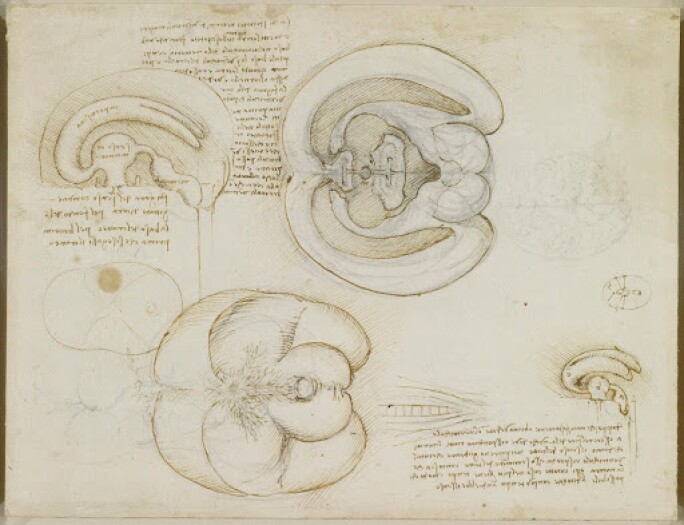“Looking at [Basquiat’s works on paper], one cannot escape without feeling the almost perverse sense of care taken to raw detail with what seems an acute distracted concentration.”
A masterful amalgamation of symbols, words, diagrams and figuration, Jean-Michel Basquiat’s Muscles of Right Orbit is an instantly recognizable work from the artist’s celebrated oeuvre of works on paper. Produced in 1985, Muscles of Right Orbit is a mature and confident declaration of Basquiat’s unparalleled draftsmanship and instinctual storytelling abilities. Dedicated “To Andy,” Muscles of Right Orbit also alludes to the close relationship between Basquiat and Andy Warhol; at the time of the drawing’s execution, Warhol and Basquiat were collaborating for a joint exhibition at Tony Shafrazi Gallery in New York, which would open a few months later in September 1985. The frenetic energy contained within Basquiat’s works on paper, especially the present work, is unique from that in his paintings: his creative genius shines through the raw immediacy culminating in an expressionistic fervor. For Basquiat, drawing was the most immediate form of expression and the quickest artistic method in which he could translate his inner thoughts.

When Basquiat was just eight years old, he was hit by a car near his home in Brooklyn. The accident, which led to the removal of his spleen, resulted in Basquiat spending over a month in the hospital. This experience fueled his fascination with the human body, inspiring recurring motifs of the skull in Basquiat’s work. In Muscles of Right Orbit, the head is paramount. Here, the head has been annotated and reduced to its most intricate elements in the brain, with the duality of the internal versus the external adding an additional symbolic layer. Basquiat stands apart for his ability to successfully blend language and image into an innovative visual lexicon, uniquely his own, which reinvigorated and elevated the status of drawing. The complex labyrinth of symbols and images are not only an expression of the artist’s innovative visual language, they are indicative of Basquiat’s most impressive compositions. Specifically detailing the complex anatomy of the brain, Muscles of Right Orbit is notable not only for its iconic imagery, but also for the fervor in which the artist created the work, transcending time and space.

Conjuring allusions to the graceful scrawls and scribbles of Cy Twombly – an artist for whom he held a deep admiration – the glimpses of Basquiat’s graphic forms invoke a sort of proto-handwriting: a kind of expression that strives toward resolution and legibility but is suspended in a perpetual territory of formal symbolism, akin to our contemporary reading of pre-historic mark-making. Phoebe Hoban captures this notion saying that, “Basquiat’s work, like that of most of his peers, was based on appropriation… the images he appropriated whether they were from the Bible or a chemistry textbook – became part of his original vocabulary… Basquiat combined and recombined these idiosyncratic symbols throughout his career: the recursive references to anatomy, black culture, television and history are his personal hieroglyphics.” (Phoebe Hoban, Basquiat: A Quick Killing in Art, New York 1998, p. 332) The young artist sampled from everyday life, art history, and a variety of cultural and socio-political semiotics oftentimes separating and isolating signs and texts, each containing layered histories. This diverse lexicon served as both image and a chronicle of language itself, overheard and spoken, a voice which visualized the slogans and jargon of the moment.

